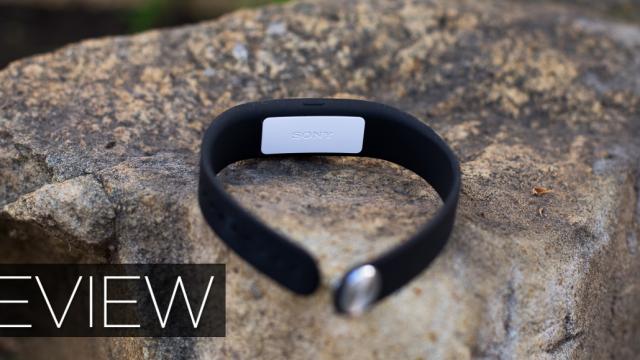In the great pantheon of activity trackers (and it’s quite a crowded pantheon at this point), there are those that focus on style, those that focus on metrics, and those that focus on bells and whistles. And then there’s Sony’s new SmartBand SW10, whose modest ambition is simply to track every little thing you do ever. It’s a game that cannot — and should not — be won.
What Is It?
It’s Sony’s first real foray into the activity tracker game. It’s a pod that fits into a band, that communicates with an Android app and logs your life.

Why Does It Matter?
It matters because it’s one of the world’s biggest tech companies trying its hand at a thing that virtually every other tech company (including tiny startups) is trying. Maybe, just maybe, it has the might to make one that stands out?
Design
Good news is the SmartBand SW10 is the most comfortable wrist-worn activity tracker I’ve tested (and I’ve tested almost all of them). It looks like a thick, nondescript black rubber band (green is also available, and a whole rainbow is supposedly coming soon). On the inside of the wrist is shiny, silver disk with Sony’s name proudly emblazoned on it. This is actually the clasp. The other side of the disk are two prongs that you push through holes in the rubber band. It comes with a small and a large band.
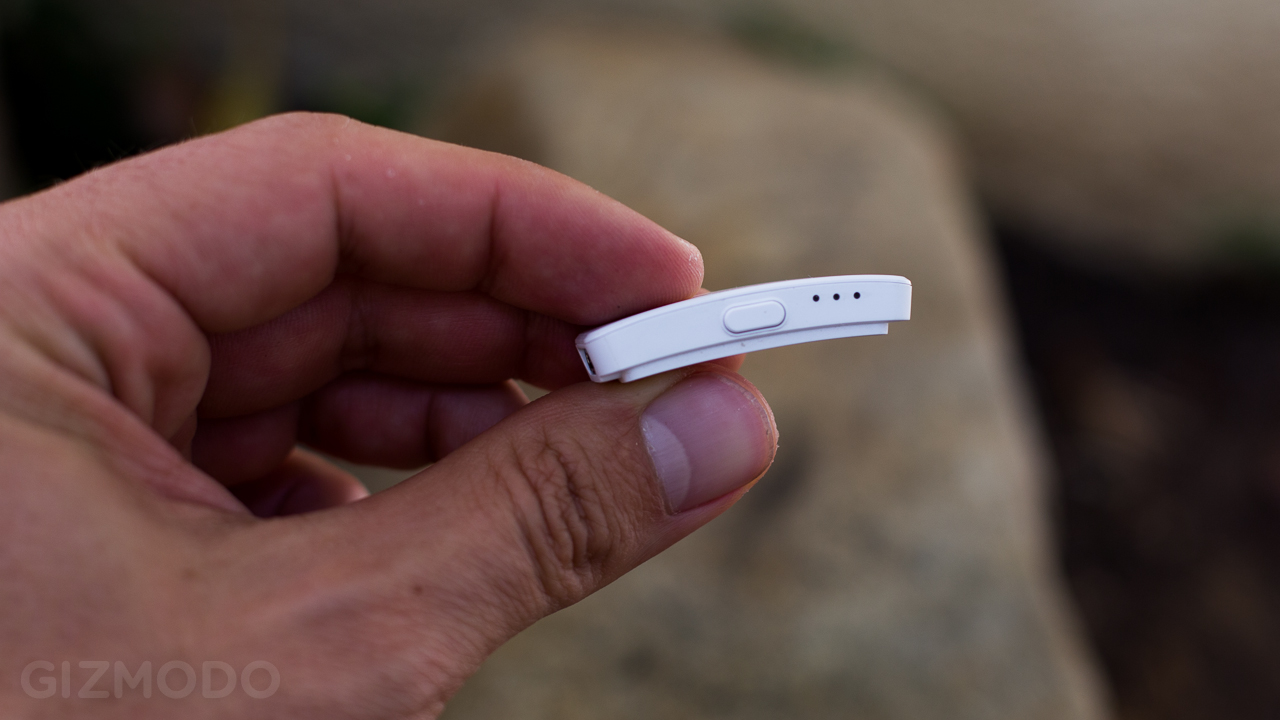
But the brains aren’t really part of the band. Easily pop-outable is the Core, a small pod with a single button and a micro USB port on it. This is where the tech is. Inside are the accelerometer, battery, and Bluetooth radio you (should) have come to expect. No altimeter, no screen. There are, however, three small LED lights that can help you tell what mode you’re in. Kind of. There’s also NFC for easy pairing.
The removable nature of the Core means that you don’t have to wear this tracker on your wrist if you don’t want to. It’s easy enough to simply drop into a pocket (or a bra) and forget about it for the day. The Core itself only weighs 5g, so you aren’t likely to notice it’s there. Despite its diminutive size, it’s waterproof to 1.5m for up to half an hour. In other words, you should be able to swim with it. Probably.
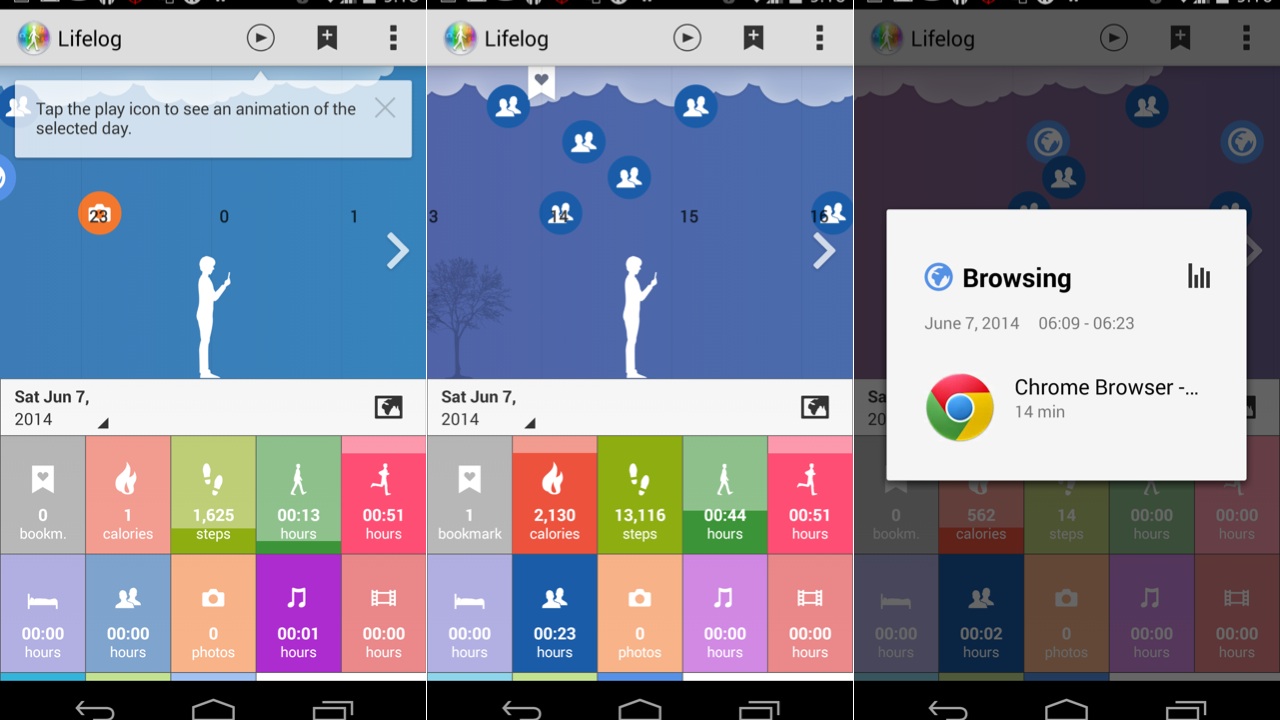
Using It
And here’s where things start to unravel. While the band may be comfortable, I discovered that I have very little patience for an electronic device that lives on my wrist and can’t give me the time of day. Even after well over a week, I kept glancing at it throughout the day and was met with disappointment each time. But whatever, the SmartBand doesn’t promise to tell time.
What it does promise, however, is that it “lets you keep track of everything you do.” This is done via Sony’s Lifelog app. The app is a colourful display of all the data the band collects merged with data that your phone collects. So not just you steps, your sleep, and your estimated calories burned, but also information about when you were listening to music, calling people, or messing around on Facebook or the web. All that crammed into a colourful visual timeline of your life. You can even take a photo with your phone it will be added to the timeline. You can double-click the one button on the SmartBand and add a “Life bookmark” that’s supposed to capture where you were at that moment and what you were doing.
It’s ambitious. It also doesn’t work worth a damn. For starters, the timeline view doesn’t flow as it should. It’s hard to tell if you’re looking at your total scores for now or for earlier in the day. Either way, things are way off. Step counts are always very low. It tells me I listened to five minutes of music when I listen to two hours. Sleep is only logged if you switch the band into Night Mode (which mutes notifications). However when you’re in night more, merely sitting still to read for a few minutes will make it think you’re asleep.
I suppose it’s fine to log when you called, Facebooked, tweeted or Gmailed, but it doesn’t say who you called, or what website you visited, or really any other information that might actually be useful. It just says that at 3:30pm you were looking at Facebook on your phone. What is the possible benefit from this? The only part of Lifelog that’s kind of interesting is laying your photos out on the timeline, but even then, I’m not convinced that it’s actually useful in any way.
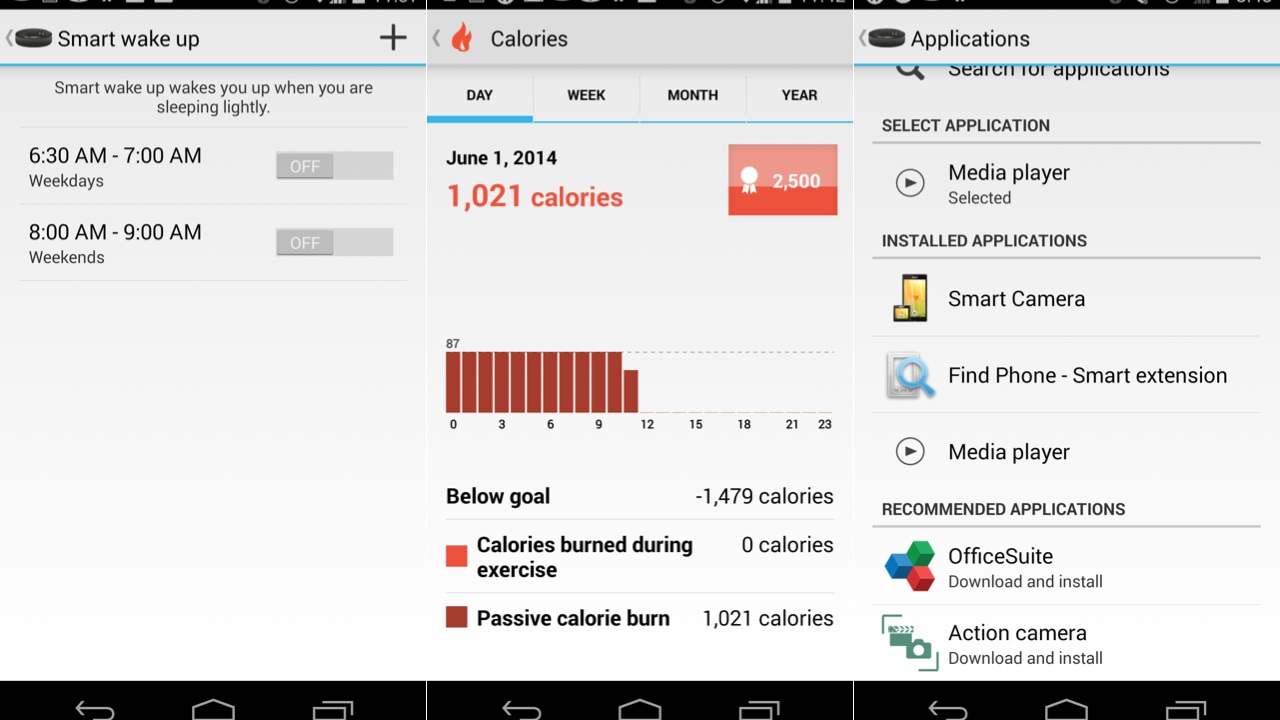
There are a few good things that it does. The band can vibrate when you get incoming calls. You can have it vibrate for all notifications too, but that seems like a terrible idea. It can also vibrate as a silent alarm clock, but it will only go off within a range of half an hour (not at a specific time), so it can wake you at what it determines to be the optimal moment in your sleep cycle. Not so handy if you’re just trying to bake a potato.
You can use the band to pause/play music, skip a track or go back a track, which could in theory be great while you’re running, but the single/double/triple click to navigate often fails to do what you want it to do. The band also simply becomes unpaired with the phone frequently during the day (though it generally does a good job of quickly reconnecting after just a few seconds). There’s no web version of Lifelog (at least not that I could find), and so you’re limited to viewing your stats on the phone the band is paired with. Oh, also, Lifelog isn’t the only app you need. In order to use the SmartBand you need to install three separate apps on your phone: Lifelog, Sony Smart Connect and one for the SmartBand. It’s pretty ridiculous.
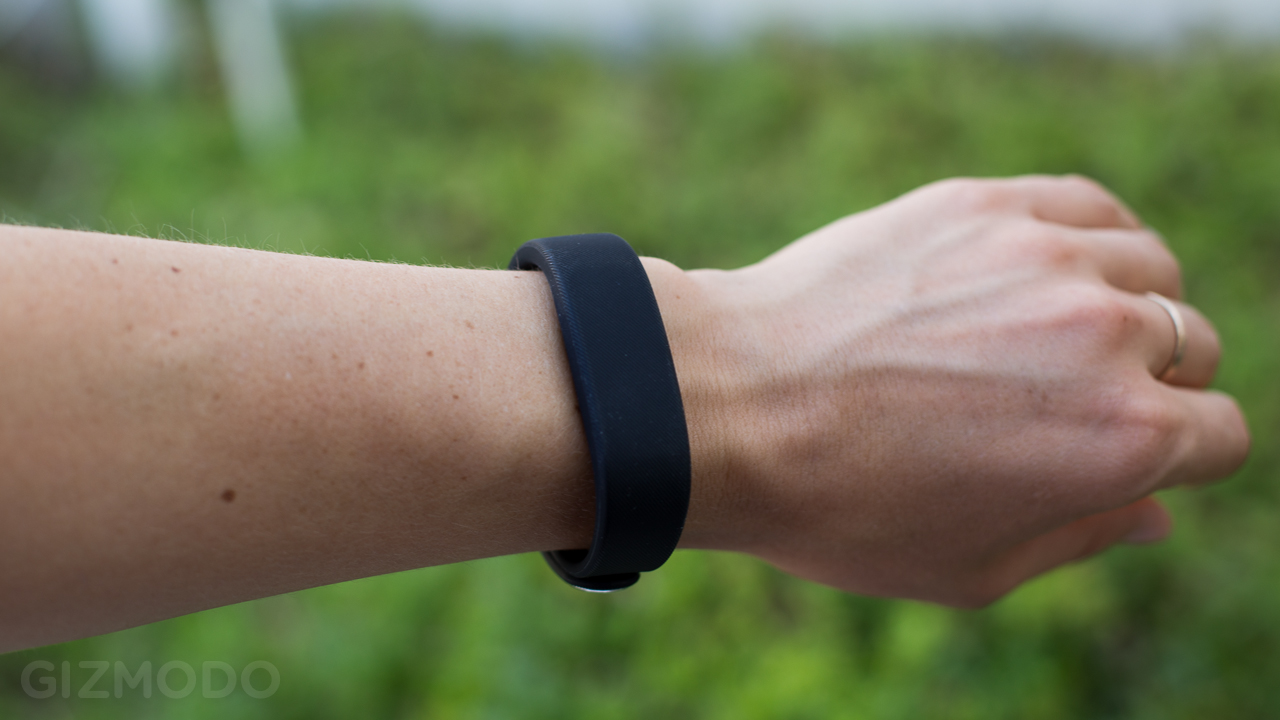
Like
The design of the band is really nice. It’s light and comfortable, and waterproof is always a good thing. Handy that it can recharge (and in just about an hour) with a standard micro USB cable. The app is really gorgeous to look at. It works with all Android phones, not just the Sony ones (coughlookingatyouSamsungcough). The idea of using the band to record important places or events is… well, a good idea.
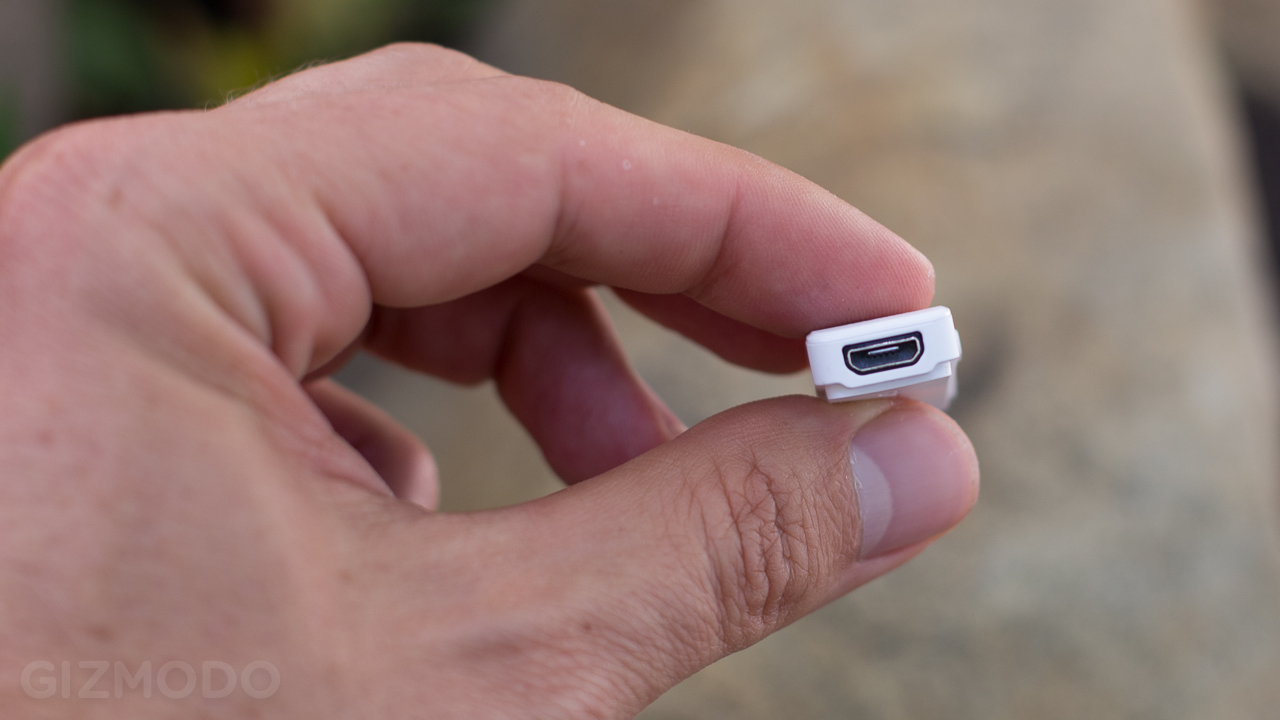
No Like
It fails to deliver very many meaningful metrics, and what metrics it does deliver, it struggles with accuracy. The app may be good-looking, but it’s actually not particularly convenient to use and a lot of the data that is in there is totally useless. Plus there’s no web version. The alarm functionality is very limited. The music player controls are very bad. It can’t tell time. It’s only compatible with phones running Android 4.4 or higher. Battery life is about five days, which is roughly half what you get from the Fitbit One or Withings Pulse.
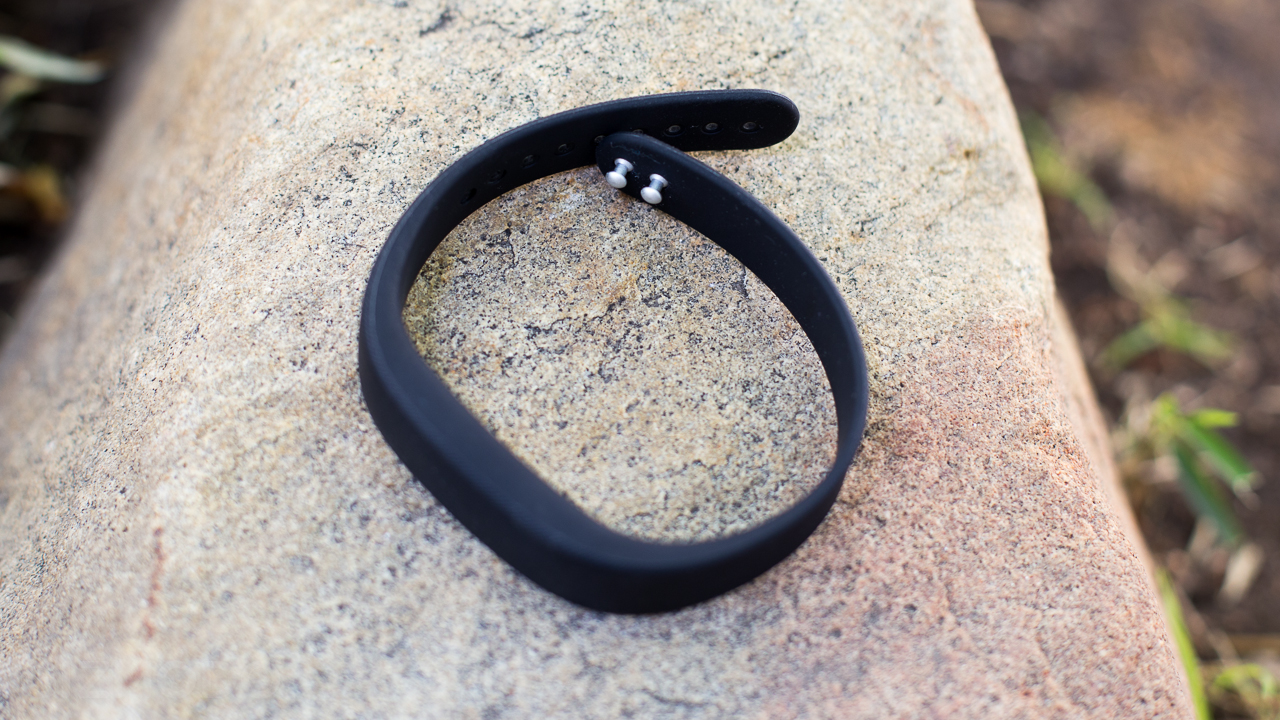
Should You Buy It?
No. It’s bad. And it’s $159 in Australia. There are some big ideas here, and while I’m not convinced that all the lifelogging is really something a lot of people want, regardless, this device does it poorly. It feels like Sony had a brainstorm session, tried to squeeze every idea they had in, and then ran out of time to make the thing and released it half-built. There’s potential here, but this device feels like an early beta. Maybe software updates will help, but more likely, you’ll want to wait at least until the next version of the hardware comes out. We’d recommend the above-linked Withings Pulse or Fitbit One instead. [Sony]
